YEALINK T52S Media IP Phone User Manual Yealink SIP T52S Quick Start Guide V81 1
YEALINK (XIAMEN ) NETWORK TECHNOLOGY CO., LTD. Media IP Phone Yealink SIP T52S Quick Start Guide V81 1
YEALINK >
Users Manual
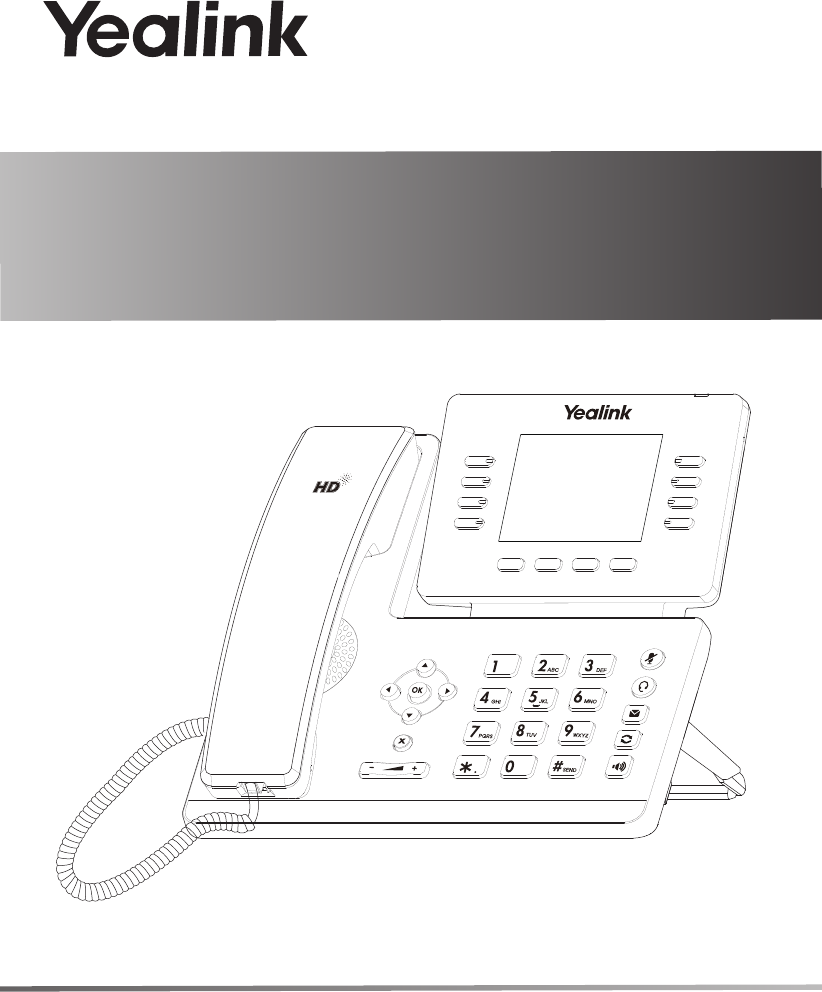
Quick Start Guide(V81.1)
SIP-T52S
www.yealink.com
Media IP Phone
Applies to firmware version 74.81.0.1 or later.
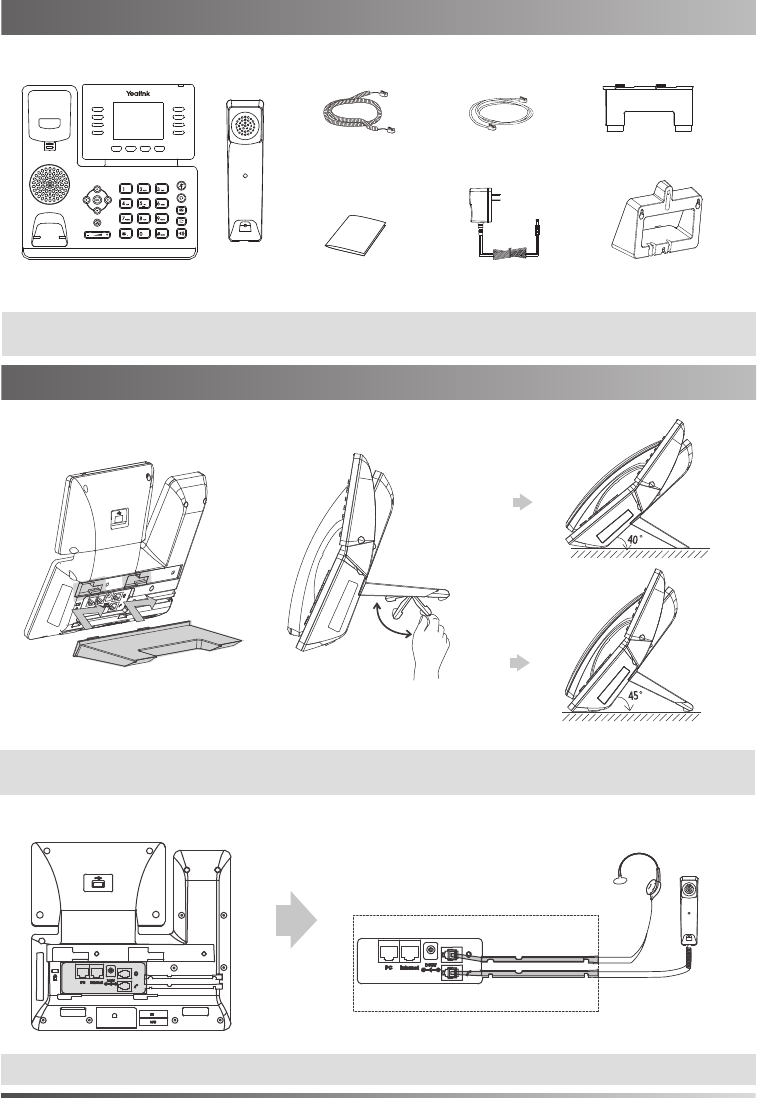
1. Attach the stand, as shown below:
2. Connect the handset and optional headset, as shown below:
The following items are included in your package. If you find anything missing, contact your system
administrator.
(Optional) (Optional)
Stand
Handset Cord
Handset
IP Phone
Ethernet Cable
Desk Mount Method
Wall Mount BracketPower Adapter
40
1
Quick Start Guide
Packaging Contents
Assembling the Phone
Note: The headset should be purchased separately.
Note: You can also mount the phone to a wall. For more information on how to attach the wall mount bracket,
refer to Yealink Wall Mount Quick Installation Guide for Yealink IP Phones.
Note: We recommend that you use the accessories provided or approved by Yealink. The use of unapproved
third-party accessories may result in reduced performance.
(2m CAT5E FTP Cable)
45
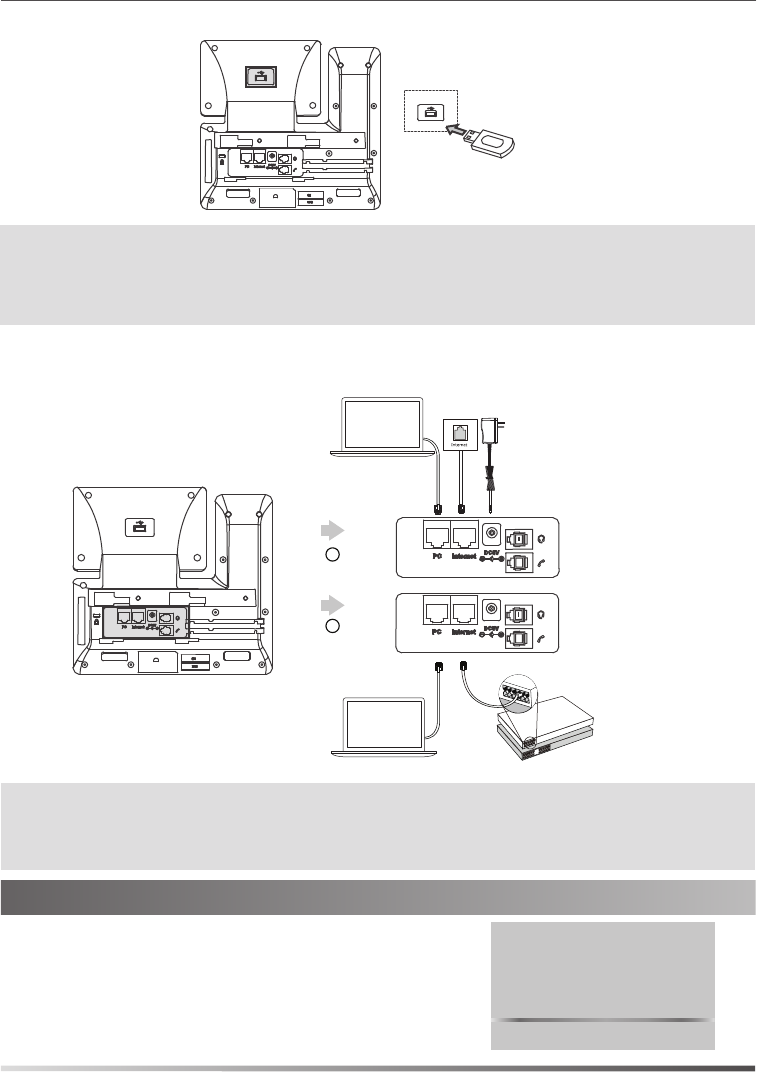
3. Connect the USB flash drive, as shown below:
4. Connect the network and power, as shown below:
You have two options for network and power connections. Your system administrator will advise you which
one to use.
After the IP phone is connected to the network and
supplied with power, it automatically begins the
initialization process. After startup, the phone is ready
for use. You can configure the phone via phone user
interface or web user interface.
Welcome
Initializing... Please wait
2
Startup
Note: The IP phone should be used with Yealink original power adapter (5V/2A) only. The use of the third-party
power adapter may cause the damage to the phone. If you are connecting a PC to your phone, we
recommend that you use the Ethernet cable provided by Yealink.
If inline power (PoE) is provided, you don’t need to connect the power adapter. Make sure the hub/switch
is PoE-compliant.
Note: The USB port can also be used to connect Wi-Fi USB dongle WF40, color-screen expansion module EXP50
and USB headset. The Wi-Fi USB dongle WF40 and color-screen expansion module EXP50 should be
purchased separately. For more information on how to use the WF40 and EXP50, refer to Yealink Wi-Fi
USB Dongle WF40 User Guide and Yealink EXP50 User Guide. For more information on how to use USB
headset, refer to the documentation from the manufacturer.
PoE Hub/Switch
A
AC Power Option
PC Connection
(Optional)
Power Adapter
(DC 5V)
B
PoE ( Power over
Ethernet ) Option
PC Connection
(Optional)
IEEE 802.3af compliant
PC
PC

Accessing the web user interface:
Account Settings:
Click on
Account->Register->Account X (X=1, 2, 3...11, 12)
Parameters of the account:
Network Settings:
Account Settings:
Configuring via phone user interface
Configuring via web user interface
Register status icons on the LCD screen:
1. Press the OK key when the phone is idle to obtain the IP address of the phone.
You can configure the network settings in the following ways:
It shows the register status of the current account.
You can select Enabled/Disabled to enable/disable the account.
It is shown on the LCD screen to identify the account.
It is shown as caller ID when placing a call.
It is provided by ITSP for registration (required).
It is an authenticated ID for authentication provided by ITSP (required).
It is provided by ITSP for registration (required).
It is provided by ITSP for registration (required).
DHCP: By default, the phone attempts to contact a DHCP server in your network to obtain its valid network
settings, e.g., IP address, subnet mask, gateway address and DNS address.
Static IP Address: If your phone cannot contact a DHCP server for any reason, you need to configure the IP
address, subnet mask, gateway address, primary DNS address and secondary DNS address
for the phone manually.
Press the Menu soft key when the phone is idle, select Advanced (default password: admin)->Network->
WAN Port/VLAN/Web Server/802.1x/VPN/LLDP/CDP/NAT to configure the network.
Press the Menu soft key when the phone is idle, select Advanced (default password: admin)->Accounts to
configure the account.
2. Open a web browser on your computer, enter the IP address into the address bar (e.g., "http://192.168.0.10"
or "192.168.0.10") and then press the Enter.
Register Status:
Line Active:
Label:
Display Name:
User Name:
Register Name:
Password:
Server Host:
3. Enter the user name (default: admin) and password (default: admin) in the login page and click
Confirm.
Network Settings: Click on
Network->Basic->IPv4 Config
Registered(Green)
3
Configuring Your Phone
Note: Check with your system administrator if any error appears during the registration process or a specific
Note: For more information on account parameters, refer to Configuring via web user interface above.
configuration is required for your registration.
Note: The IP phone also supports IPv6, but IPv6 is disabled by default.
Wrong network settings may result in the inaccessibility of your phone and may have an impact on the
network performance. Contact your system administrator for more information.
Register Failed
(Gray)
Registering
(Yellow)
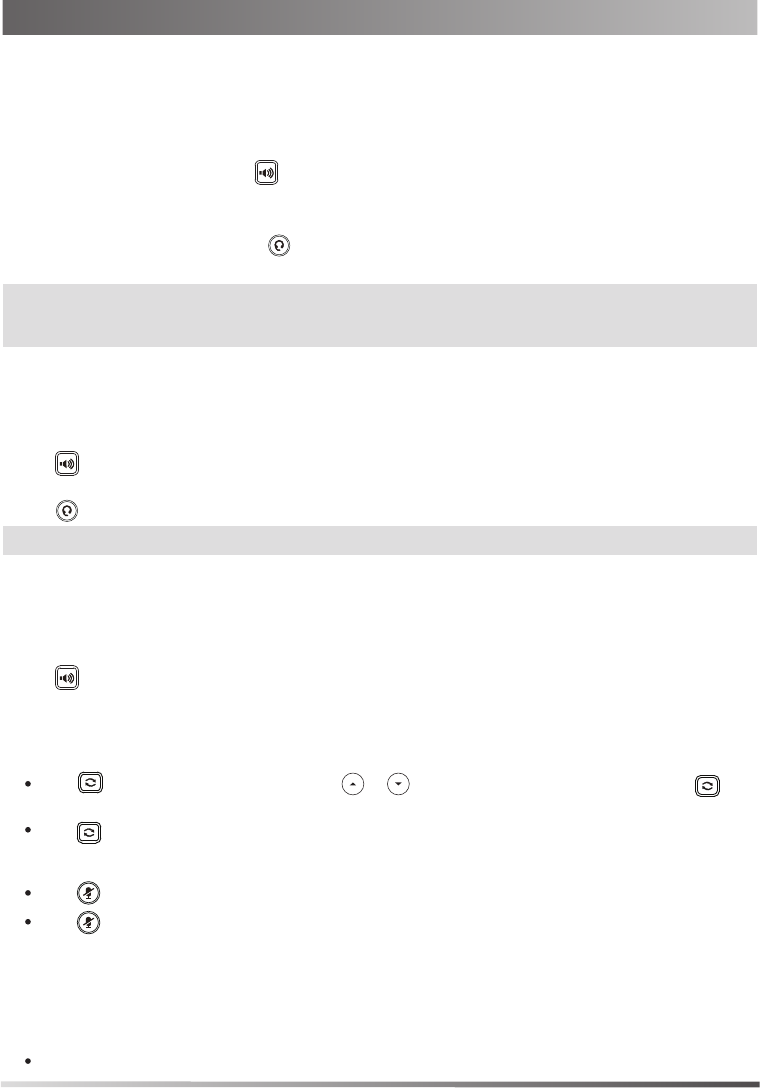
Placing a Call
Answering a Call
Ending a Call
Call Mute and Un-mute
Redial
Call Hold and Resume
To place a call on hold:
Using the handset:
Using the speakerphone:
Using the headset:
Using the handset:
Using the speakerphone:
Using the headset:
Using the handset:
Using the speakerphone:
Using the headset:
1. With the handset on-hook, press .
1. Pick up the handset.
2. Enter the number, and then press the Send soft key.
1. With the headset connected, press to activate the headset mode.
2. Enter the number, and then press the Send soft key.
2. Enter the number, and then press the Send soft key.
Pick up the handset.
Press .
Hang up the handset or press the EndCall soft key.
Press .
Press or the EndCall soft key.
Press the EndCall soft key.
Press to enter the Placed Calls list, press or to select the desired entry, and then press or
the Send soft key.
Press twice when the phone is idle to dial out the last dialed number.
To resume the call, do one of the following:
Press to mute the microphone during a call.
Press again to un-mute the call.
If there is only one call on hold, press the Resume soft key.
Press the Hold soft key during an active call.
4
Basic Call Features
Note: During a call, you can alternate between the headset, hands-free speakerphone and handset modes by
Note: You can reject an incoming call by pressing the Reject soft key.
pressing the HEADSET key, the Speakerphone key or by picking up the handset. Headset mode requires
a connected headset.

Speed Dial
To configure a speed dial key:
To use the speed dial key:
4. Press the EndCall soft key to disconnect all parties.
1. Press the Menu soft key when the phone is idle, and then select Features->DSS Keys.
2. Select the desired DSS key, and then press the Enter soft key.
4. Press the Save soft key to accept the change.
Press the speed dial key to dial out the preset number.
3. Select Speed Dial from the Type field, select the desired line from the Account ID field, enter a label in the
Label field, enter the number in the Value field, enter an abbreviation (2 characters) in the Short Label field.
Call Conference
Call Forward
To enable call forward:
Always Forward----Incoming calls are forwarded unconditionally.
Busy Forward----Incoming calls are forwarded when the phone is busy.
No Answer Forward----Incoming calls are forwarded if not answered after a period of time.
1. Press the Menu soft key when the phone is idle, and then select Features->Call Forward.
2. Select the desired forward type:
3. Enter the number you want to forward to. For No Answer Forward, press or to select the desired
ring time to wait before forwarding from the After Ring Time field.
4. Press the Save soft key to accept the change.
1. Press the Conf soft key during an active call. The call is placed on hold.
2. Enter the number of the second party, and then press the Send soft key.
3. Press the Conf soft key again when the second party answers. All parties are now joined in the
conference.
If there is more than one call on hold, press or to select the desired call, and then press the Resume
soft key.
Semi-Attended Transfer
Attended Transfer
Blind Transfer
Call Transfer
You can transfer a call in the following ways:
1. Press the Tran soft key during an active call. The call is placed on hold.
1. Press the Tran soft key during an active call. The call is placed on hold.
1. Press the Tran soft key during an active call. The call is placed on hold.
2. Enter the number you want to transfer to, and then press .
3. Press the Tran soft key when the second party answers.
2. Enter the number you want to transfer to, and then press .
3. Press the Tran soft key when you hear the ring-back tone.
3. Press the Tran soft key.
2. Enter the number you want to transfer to.
Note: You can split the conference call into two individual calls by pressing the Split soft key.
5
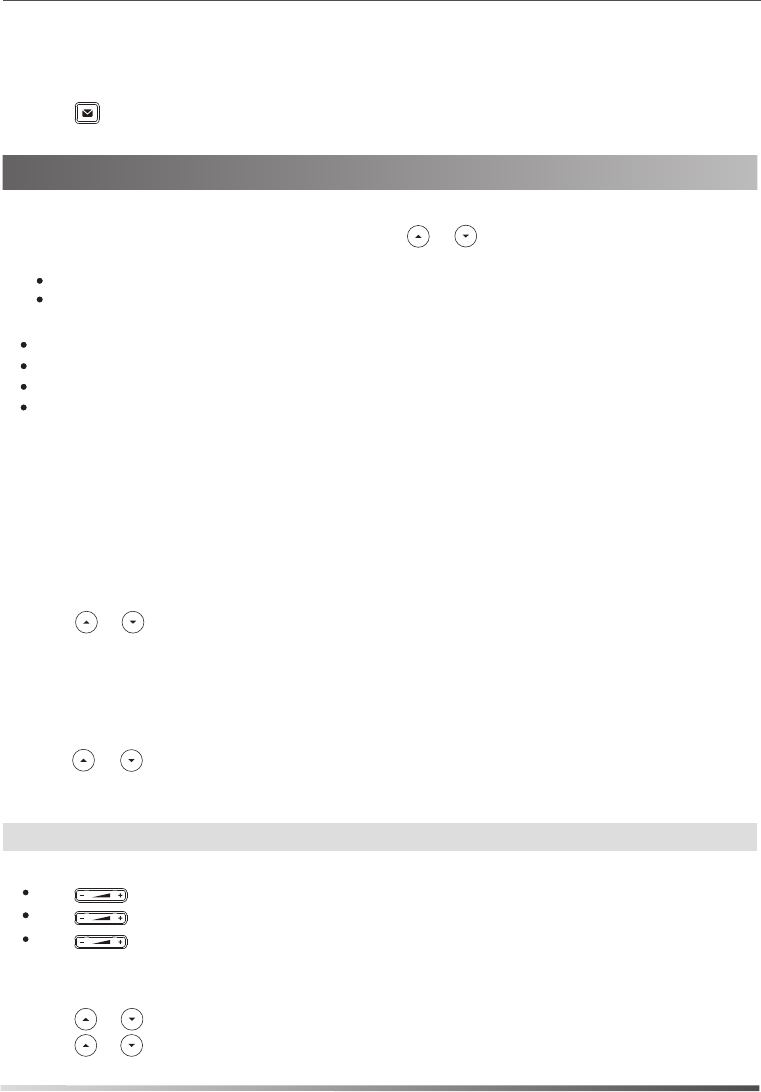
Voice Message
Contact Directory
Ring Tones
Volume Adjustment
To add a contact:
To edit a contact:
Call History
To delete a contact:
To listen to voice messages:
Press the Send soft key to call the entry.
Select Detail to view detailed information about the entry.
Select Add to Contact to add the entry to the local directory.
Select Add to Blacklist to add the entry to the blacklist.
Select Delete All to delete all entries from the list.
Press during a call to adjust the receiver volume of the handset/speakerphone/headset.
Press when the phone is idle or ringing to adjust the ringer volume.
Press to adjust the media volume in the corresponding screen.
Press the Delete soft key to delete the entry from the list.
Message waiting indicator on the idle screen indicates that one or more voice messages are waiting at the
message center. The power indicator LED slowly flashes red.
1. Press or the Connect soft key.
2. Follow the voice prompts to listen to your voice messages.
1. Press the History soft key when the phone is idle, press or to scroll through the list.
2. Select an entry from the list, you can do the following:
If you press the Option soft key, you can also do the following:
1. Press the Directory soft key when the phone is idle, and then select All Contacts.
2. Press the Add soft key to add a contact.
1. Press the Directory soft key when the phone is idle, and then select All Contacts.
1. Press the Directory soft key when the phone is idle, and then select All Contacts.
3. Press the OK soft key when the LCD screen prompts “Delete selected item?”.
3. Press or to select the desired ring tone.
4. Press the Save soft key to accept the change.
3. Edit the contact information.
4. Press the Save soft key to accept the change.
4. Press the Save soft key to accept the change.
3. Enter a unique contact name in the Name field and contact numbers in the corresponding fields.
2. Press or to select the desired contact, press the Option soft key and then select Detail from the
2. Press or to select the desired contact, press the Option soft key and then select Delete from the
6
Customizing Your Phone
Note: You can add contacts from call history easily. For more information, refer to Call History above.
2. Press or to select Common or the desired account and then press the Enter soft key.
1. Press the Menu soft key when the phone is idle, and then select Basic->Sound->Ring Tones.
prompt list.
prompt list.

About us
Founded in 2001, Yealink, a leading provider of VoIP Phone and IP communication solutions, has been focusing on VoIP
products characterized by reliable quality, easy deployment and affordable price for more than a decade. Today,
customers from over 140 countries rely on Yealink as the backbone of global collaboration to extend the value of
network communications.
More about Yealink
Since 2001, Yealink has continued to develop state-of-the art, hi-tech VoIP communication terminals that include IP
video phones, IP phones and USB phones. With a worldwide market in more than 140 countries, the company has also
established a first-class international service network.
Our priorities are quality, functionality, ease-of-use, customer support and competitive pricing. To provide new solutions
for the future in this fast-evolving sector, Yealink’s large, talented and highly-experienced VoIP R&D team is totally
committed to the pursuit of excellence.
To date, we have passed more than 80 interoperability tests and meet certification requirements set by leading VoIP
system and platforms. Yealink works in close partnership with T-Mobile, Telefonica, Portugal Telecom and other leading
telecommunication service providers.
YEALINK(XIAMEN) NETWORK TECHNOLOGY CO.,LTD.
Web: www.yealink.com
Addr: 309, 3th Floor, No.16, Yun Ding North Road, Huli
District, Xiamen City, Fujian, P.R. China
Copyright©2017 YEALINK(XIAMEN) NETWORK
TECHNOLOGY CO.,LTD.All rights reserved.
6
938818 301658
''This product meets the applicable Innovation, Science and Economic Development Canada technical
specifications. / Ce produit répond à la innovation, des sciences et de Développement économique Canada
spécifications techniques applicables.”
''The Ringer Equivalence Number (REN) indicates the maximum number of devices allowed to be connected to
a telephone interface. The termination of an interface may consist of any combination of devices subject only to
the requirement that the sum of the RENs of all the devices not exceed five. / Le nombre équivalent de
sonneries (REN) indique le nombre maximal de terminaux qui peuvent être raccordés à une interface
téléphonique. La terminaison d'une interface peut consister en une combinaison de dispositifs, à la seule
condition que la somme des REN de tous les dispositifs ne dépasse pas cinq.''
This device complies with Industry Canada’s licence-exempt RSSs. Operation is subject to the following two conditions:
(1) This device may not cause interference; and
(2) This device must accept any interference, including interference that may cause undesired operation of the device.
CAN ICES-3(B)
Le présent appareil est conforme aux CNR d’Industrie Canada applicables aux appareils radio exempts de licence.
L’exploitation est autorisée aux deux conditions suivantes :
(1) l’appareil ne doit pas produire de brouillage;
(2) l’utilisateur de l’appareil doit accepter tout brouillage radioélectrique subi, même si le brouillage est susceptible d’en
compromettre le fonctionnement.
NMB-3(B)
Federal Communication Commission Interference Statement
This equipment has been tested and found to comply with the limits for a Class B digital device, pursuant to Part 15 of the FCC
Rules. These limits are designed to provide reasonable protection against harmful interference in a residential installation. This
equipment generates, uses, and can radiate radio frequency energy and, if not installed and used in accordance with the
instructions, may cause harmful interference to radio communications. However, there is no guarantee that interference will not
occur in a particular installation. If this equipment does cause harmful interference to radio or television reception, which can be
determined by turning the equipment off and on, the user is encouraged to try to correct the interference by one or more of the
following measures:
• Reorient or relocate the receiving antenna.
• Increase the separation between the equipment and receiver.
• Connect the equipment into an outlet on a circuit different from that to which the receiver is connected.
• Consult the dealer or an experienced radio/TV technician for help.
RF exposure warning
This equipment must be installed and operated in accordance with provided instructions and the antenna(s) used for this
transmitter must be installed to provide a separation distance of at least 20 cm from all persons and must not be co-located or
operating in conjunction with any other antenna or transmitter. End-users and installers must be provided
with antenna installation instructions and transmitter operating conditions for satisfying RF exposure compliance.